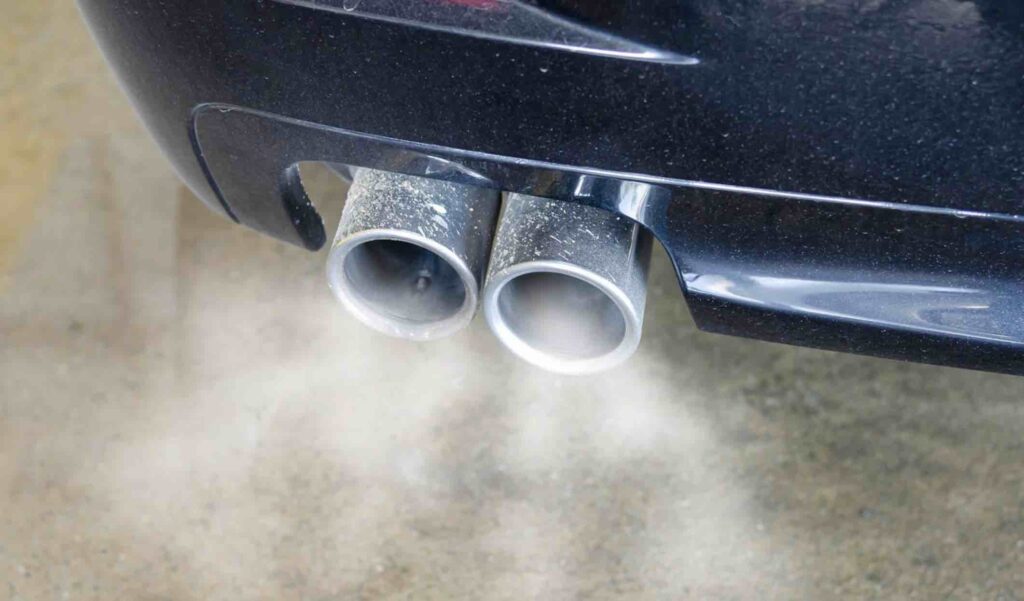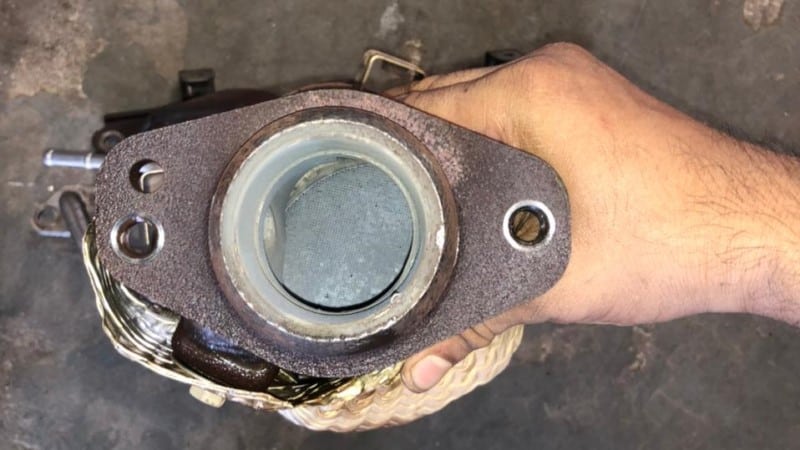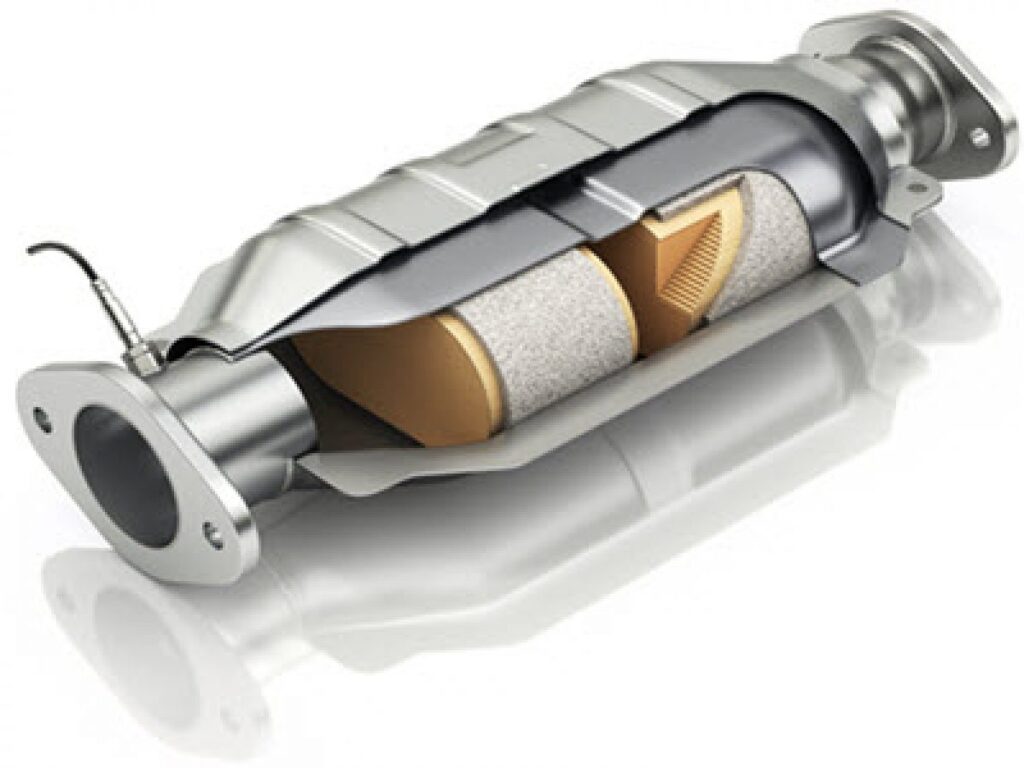Last updated on July 28th, 2023 at 05:12 pm
The function of catalytic converters is to turn hydrocarbons, nitrogen oxides, carbon monoxide, and other harmful exhaust engine emissions into harmless compounds so that they don’t hurt our environment.
If you are reading this, you must be seeking ways to unclog catalytic converter hammers. And here are a few of the other topics we will cover in this article: can a clogged catalytic converter be fixed, what causes a catalytic converter to clog up, how much does it cost to fix a clogged catalytic converter, what to do about a clogged catalytic converter and finally 5 ways to unclog catalytic converter hammer
Whenever you drive a vehicle with an internal combustion engine, you should be expecting to experience a clogged catalytic converter sometimes. So why should you expect that?
This is because the cat converter is what converts dangerous exhaust emissions into less harmful gases.
Due to smoke passing through the exhaust, it’s likely going to clog sooner or later. And that is why I will show you various ways to unclog the catalytic converter hammer and how to keep your catalytic converter functioning optimally but let’s first address the question “can a clogged catalytic converter be fixed?”
You love to read these related Articles:
- Catalytic Converter Scrap Price List(Ultimate Lookup Guide)
- Pros & Cons of Removing & Gutting Your Catalytic Converter
- Which Cars Are Least Likely To Have Catalytic Converter Stolen
- Easiest Catalytic Converters To Steal
Can A Clogged Catalytic Converter Be Fixed?
Yes, a clogged catalytic converter can be fixed and you can do this by unclogging the catalytic converter with cat cleaner. This is the best and most cost-efficient method because it is very expensive to replace a clogged catalytic converter if you conder that route.There are many ways to fix a clogged cat converter for instance; you can unclog your catalytic converter by combining fuel and a catalytic converter cleaner.
But if the cat converter is beginning to flow poorly because it’s clogged up, it will cause your car to perform poorly. It will make your car lack power and fuel economy.
While on a serious case, the cat converter can even overheat causing other components on the undercarriage to combust, smolder, melt, or even catch fire.
What To Do About A Clogged Catalytic Converter
You need to purchase a can of catalytic converter cleaner from any automotive supply store near you or in the automotive section of your local grocery store.
It can also be purchased online, but you should buy a catalytic converter cleaner that’s perfect for the make and model of your car. Then follow these steps:
- You should drive the vehicle until there are about 15 liters of fuel left in it. But ensure you don’t attempt to clean your cat converter with less than this amount of fuel in your tank.
- Now pour the cleaner into your fuel tank. You will find instructions on the bottle of the catalytic converter cleaner that will tell you how much cleaner to use.
- After that, replace your fuel cap and drive your car for half an hour and if necessary, drive on a highway. Make sure to drive until the tank is close to empty. But make sure that your engine doesn’t overheat.
- Now you clear the OBD code and let it calibrate. After that, do a reading of the converter again.
Note that this method will work only if your converter is not clogged. But if the code is still showing on your dash, then there are other ways to unclog the converter which we’ll look into later. Our Readers also love this: Overheated Catalytic Converter Symptoms & Fix Car Overheating
What Causes A Catalytic Converter To Clog Up?
In the long run, all cat converters fail as it’s a wearing part. This is because carbon deposits accumulate and clog up the cat, especially if your car has run a lot of miles.
This is because cat converters contain honeycomb-like structures and are coated with rhodium, platinum, or palladium depending on the catalyst stage. So whenever the cat gets clogged, the exhaust gases won’t be able to pass. Here are what causes a catalytic converter to clog up.
- Unburned Fuel going inside the Exhaust System
As you may know, the gas that powers your car is burnt up in the combustion chamber. So any gas that goes through the combustion chamber unburned will enter the exhaust system and the unburned gasses can ignite once it reaches the catalytic converter.
When this happens, it can over-heat the cat far beyond its normal operating limit and will cause a Melt Down. So one of the possible causes is an improper fuel mixture, bad spark plugs, incorrect timing, a malfunctioning oxygen sensor, defective fuel injector, sticking float, or a faulty check valve.
- Bad Spark Plugs or Spark Plug Wires
Any spark plug that doesn’t fire or misfire will force unburned fuel to go into the exhaust system. This is because the cat converter can be very hot, and these unburned gasses can ignite inside the cat converter and can result in a complete or partial meltdown of the ceramic catalyst.
- Coolant Leaks
When coolant leaks into your engine’s combustion chamber, it can be a serious problem that could eventually do significant damage to your vehicle. However, a slow leak coming from a bad head gasket could also send enough coolant back to your vehicle’s exhaust system over time.
This could even clog the cat converter and contaminate the converter’s materials used inside till they are no longer functioning. Whenever you observe that coolant is disappearing from your engine’s reservoir or you notice white smoke coming from your exhaust, then that’s a sign of a bad head gasket, and it should be corrected immediately.
- Oxygen Sensor Not Functioning Properly
When your oxygen sensor is no longer functioning well, it can send incorrect readings of exhaust gasses to your vehicle’s computer system. The incorrect sensor readings can result in an improper (too rich or too lean) fuel mixture condition.
Due to being too rich a fuel mixture can make the catalyst meltdown from fuel-burning inside the converter. But when it’s too lean, the converter will not be able to function well to change hydrocarbons into safe elements.
When this happens, it may cause your car to fail the emissions test during the annual State Vehicle Inspection.
- Short Trips
When you always take short trips around town with your vehicle and you don’t regularly drive long distances, then your cat converter might not be getting hot enough to completely burn away its hydrocarbons.
To avoid having the catalytic converter clogged, ensure you occasionally drive on the highway for at least 30 minutes or more. When you do this, it will allow the exhaust to sufficiently heat up and this will burn off all of the deposits that have built up in the catalytic converter.
How Much Does It Cost To Fix A Clogged Catalytic Converter?
As you know, cat converters are very expensive to buy, but adding a catalytic converter cleaner to your gas tank may help you to clear up the clog. Though this may take more than one use.
However, there’s a much stronger method of cleaning a catalytic converter which is to remove the cat and soak it in a solution of citric acid for about 6-8 hours.
But due to the precious metals used in producing cat converters (ie: platinum and palladium), buying it isn’t cheap.
So you must bear in mind the age and make of the car, the number of cat converters your car uses, before you know how much does it costs to fix a clogged catalytic converter. So let’s check them out…
- For Gasoline Engines – 1981 and Newer
All gasoline engine vehicles built since 1981 have a three-way cat converter. Note that this design can be more complicated than those in older vehicles which means the cost of the parts is high.
But on average, expect to pay anywhere between $600 and $2,500 to replace a catalytic converter in newer cars. The parts alone can cost you about $500 to $1,800, while labor will cost you about $75 to $150 for around one hour of labor required for the replacement.
- For Gasoline Engines – Before 1981 (and Diesel Engines)
All gasoline engine vehicles were built before 1981 and most diesel engines (any year) have about two-way cat converters. But due to the simplicity of its design, replacement costs are usually cheaper.
So the total cost of replacing a catalytic converter in these older vehicles will cost you about $175 to $750. Keep in mind that you’ll be paying around $100 to $600 in parts and while $75 to $150 will be paid for labor.
5 Ways To Unclog Catalytic Converter Hammer
Do you want to unclog the catalytic converter hammer? Then here are 5 ways to unclog the catalytic converter hammer.
1. The Italian Tune-Up

This Italian Tune-Up method happens to be one of the common fixes for a range of automotive issues, and this includes a clogged catalytic converter.
A lot of drivers simply don’t push their cars hard enough to heat the cat converter to its best and most efficient temperature which is between 800 °F (426 °C) and 1,832 °F (1,000 °C), and this may lead to premature failure of the cat converter.
When you run your vehicle harder than usual for a few miles, it will heat the cat converter adequately and burn off all unwanted deposits in the intake, exhaust, cylinder head, oxygen sensors, and the cat converter.
2. Ensuring that Engine and other car parts are Running Right

Sometimes what it takes to unclog your cat converter is to fix other engine problems.
A faulty oxygen sensor might falsely show a catalytic converter problem, but yet not set a DTC for itself.
However, it is the technician that can determine if the O2 sensor is responding as it should.
Sometimes other engine problems like fuel trim running too rich or too lean, engine misfire problems, or coolant burning, could all lead to cat converter contamination or premature failure.
Note that fixing the engine problems might save your catalytic converter from a meltdown, though this depends on the extent of the damage already done.
3. Fixing Exhaust Problems

Note that the exhaust leaks can be common and they can skew O2 sensor readings without setting other DTCs. When you search for this, it might reveal to you that it’s an exhaust leak, and this means when repaired, it could restore your catalytic converter function, at least from the viewpoint of your vehicle’s ECM.
Worn exhaust gaskets and corroded flex pipes are known to be the two common problems that are significantly less expensive but more effective than having your catalytic converter replaced.
how to unclog catalytic converter
4. Clean the cat converter without removing it

Cleaning the cat converter can be another effective way to unclog the cat converter, but there are two ways to clean it which is by removing and without removing it.
- Pour fuel inside a can and use a catalytic converter cleaner. Note that most of the cleaners in the market only work for gasoline engines or with diesel, while others work on both.
- Then ensure the vehicle’s fuel tank has a minimum of 15 liters of fuel.
- Now put the cleaner into the fuel tank which must be the exact amount recommended by producers.
- Turn on the car engine and drive. Once you drive your car, the cleaner will spread through your engine to clean up the car exhaust system. Be aware that the cleaner’s label contains all info you need on how long you should drive to get the best results.
- After that, drive your car for about half an hour or as recommended by cleaner’s producer till the fuel tank becomes empty. But ensure your engine doesn’t overheat.
5. Cleaning the catalytic converter by removing it

Another way to unclog the cat converter is to clean it by removing it.
- Now deep clean your catalytic converter if notice the code is still showing, which can be done by removing it.
- Ensure your car is parked on a flat surface, then switch it off, and let it completely cool down.
- Use a hydraulic jack to raise the catalytic converter and ensure the car is secured on the jack stands.
- Make sure to disconnect the oxygen sensor with an oxygen sensor wrench.
- Now rub some penetrating oil on the bolts, by holding the converter onto the exhaust system.
- Take off the converter and examine it. Ensure to shake it well, and once you hear a loud rattle, then get it replaced. But if you found little or no rattle, you should start the cleaning.
- The inside should be washed and the outside of the catalytic converter cleaned from dirt and debris.
- Make sure you power wash the outlet and inlet pipes.
- Just mix hot washer and degreaser, then soak the converter inside this mixed solution for about one to two hours.
- Pull it out, rinse and clean it with another water, and allow it to air dry.
- The converter and the oxygen sensor should be reinstalled.
- The car should be test drive and then check for the code.
Your vehicle’s exhaust system is incomplete without the cat converter so you need to make sure your cat is not clogged by applying any of the ways I have shown above to unclog catalytic converter hammer. Your cat should last approximately 100,000 miles if it is well maintained before it can clog. It should be replaced if it becomes clogged or faulty.
Catalytic converters can be expensive to replace so you can clean them if they become clogged. Because cat converters contain noble metals, they are very expensive. To get rid of most of the fuel left behind, clean your cat’s eyes with a cleaning solution.
I hope this post was helpful to you? what to do about a clogged catalytic converter, what causes a catalytic converter to clog up, and how much does it cost to fix a clogged catalytic converter. If you find this post to be helpful, please share it.
What to Read next: Tips On Prius Catalytic Converter Theft Prevention or this How To Fix A Clogged Up Catalytic Converter

Hi dear, my name is Jeffery Ekweghi, and I am a certified mechanic and autobody parts technician. I created this site to share my expertise and experience with car lovers looking to resolve their car-related issues. I am certified in private cars and heavy-duty commercial vehicles. I have worked as a mechanic since 2015 and have experience in vehicle brands like Subaru, Jeep, Toyota, TATA, BMW, Mazda, Honda, Nissan, Kia, TVs, and Others; however, I primarily specialize in Toyota vehicles.













